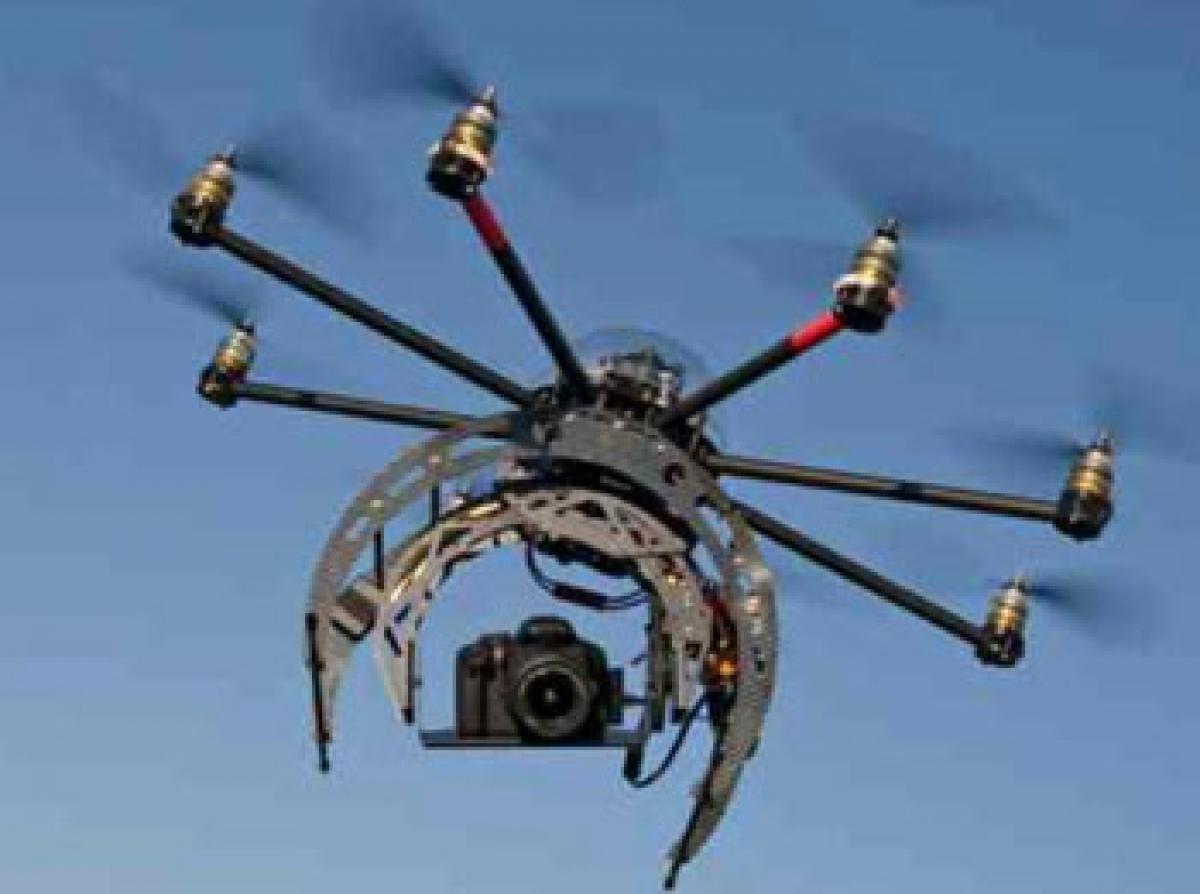Live
- Develop interest in science, ZP chief asks students
- Ban on 22A lands will be lifted: Minister
- Health dept monitoring situation after outbreak of new virus in China
- Science exhibitions inspire critical thinking: Collector Venkateswar
- Ministers visit Bangalore, interact with women, officials
- TGMC issues notice to Rush Care Hospital
- Former PM Manmohan Singh’s contributions remembered
- EO reviews arrangements with HoDs
- DGP: SSP to have boxing, cricket coaching centres
- Gukesh promises best moves on 64 squares in 2025
Just In

A group of scientists has developed a novel technology to enhance the movement of drones in the tough plateau mountain regions. The unmanned aerial vehicles (UAV) designed for plateau missions are usually installed with high span chord ratio wings, which provides more lifting force at a relatively low airspeed.
 Beijing: A group of scientists has developed a novel technology to enhance the movement of drones in the tough plateau mountain regions. The unmanned aerial vehicles (UAV) designed for plateau missions are usually installed with high span chord ratio wings, which provides more lifting force at a relatively low airspeed.
Beijing: A group of scientists has developed a novel technology to enhance the movement of drones in the tough plateau mountain regions. The unmanned aerial vehicles (UAV) designed for plateau missions are usually installed with high span chord ratio wings, which provides more lifting force at a relatively low airspeed.
The UAVs employ high span chord ratio wings but tend to lose their maneuverability. Hence, they usually need larger turning radius and unable to maintain the altitude during sharp slope turning as the lifting force produced by the wings decrease dramatically when the bank angle is large.
The discarding of the flight performances may risk the safety of the flight in plateau mountain regions. “The new Variable thrust direction (VTD) technology is a type of thrust vectoring control (TVC) approach that allows to manipulate the directions of thrust to the fuselage of the aircraft,” the authors noted in a paper published in the journal SCIENCE CHINA Information Sciences.
By the introduction of the VTD capability to the conventional propeller UAV, the maneuverability of the UAV has been greatly enhanced, since the VTD engine enables direct force control of the aircraft. Most of the existing works are designed for jet engines, which cannot be applied to the conventional propeller engine aircraft.
The VTD mechanism allows redirecting parts portion of the thrust from the propeller engine to other directions rather than normal axial direction. A combination flight controller for the VTD enhanced UAV is then proposed to coordinate the VTD controlled forces and aerodynamic surfaces forces.
“The newly developed VTD UAV was applied to implement plateau missions, which demonstrates the usefulness of the proposed technique,” the team added.

© 2024 Hyderabad Media House Limited/The Hans India. All rights reserved. Powered by hocalwire.com







